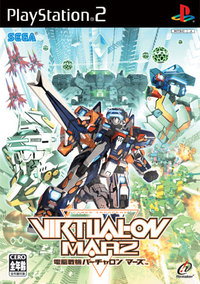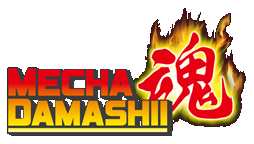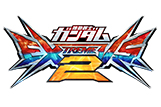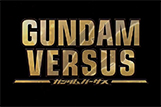Reviews: Virtual On Marz (6/10)
Posted on : 06-09-2009 | By : Cacophanus | In : Reviews
Hardware: PlayStation 2
1
 Virtual On is oft-misunderstood as a series. The majority of people focus on the presence of big robots, rather than the game mechanics, that the franchise offers. Moreover, the game’s control interface, through that of a pair of TwinSticks, has caused consternation amongst many a gamer due to their apparent lack of inclusivity: players new to the title struggle with the steep learning curve these devices create, not forgetting to mention that the majority of people remain utterly baffled as to the game’s actual content, and how to manoeuvre within the game world.
Virtual On is oft-misunderstood as a series. The majority of people focus on the presence of big robots, rather than the game mechanics, that the franchise offers. Moreover, the game’s control interface, through that of a pair of TwinSticks, has caused consternation amongst many a gamer due to their apparent lack of inclusivity: players new to the title struggle with the steep learning curve these devices create, not forgetting to mention that the majority of people remain utterly baffled as to the game’s actual content, and how to manoeuvre within the game world.
Arcade games require practice, patience and training on the part of the player. Virtual On has a brutal learning curve, but the thoroughness of thought and skill that is expected from the player only helps to enrich the overall experience. Thing is, this could be said for any arcade game, and is very much a tenet of design within this part of the games industry.
Virtual On originally started life as a fully three-dimensional two player versus game. The player took control of a Virtuaroid (or VR) through the use of the TwinSticks (two joysticks with a trigger and a dash button each). Combat was split into two areas: distanced and melee. In ranged combat, the player utilised the dashing function combined with a homing attack emitted from one of the three available weapons. However, in order to connect an attack the player to had to make several judgement calls. Due to the vector-based nature and limited duration of these dashes, a high level of tactical thinking was required on the part of the player.
In committing to a dash attack, the player would be out of direct control of their VR until the duration of the attack had finished. To clarify, their VR would be vulnerable to any attack from their opponent during this dash. This meant the player had to make mighty sure that their attack would hit home whilst ensuring their opponent’s would miss. Otherwise you could end up with a face full of hot, sticky white plasma. These “dash attacks” were very much a signature trait of Virtual On. Yet this was not all the game offered.
Close combat was very much a game in- and of-itself within Virtual On. When your VR came within range of your opponent the player was given a diverse platter of melee intricacy and brutality. Rather than having two disparate game mechanics battling for supremacy though, the dash attacks beautifully linked the various ranges into a seamless whole. If anything, they complimented one another.
In 2001, the reigns of Virtual On were handed over from AM3 to Hitmaker. The latter then promptly released “Dennou Senki Virtual On Force”. Run on Hikaru hardware, Force was a first for the series in many respects. The most visually obvious difference was that of it being four player; the latter and more important difference was that it sucked. Since the series inception in 1995, Virtual On has always been an intricate and vibrant versus experience. Force changed all that into mind-numbing tedium.
What made Force so dire? Take all the Virtual On games before it. Strip away everything that made them unique leaving the fundamentals of Virtual On. Then remove dash vectoring.
For people coming from the original games, you’ve lost all motion cancellation, delay removal, the majority of basic cancellations, crouch follow-through, aerial dashing (with a few obvious exceptions) and a seriously toned-down close combat system. Moreover, the hardware requirements for Force were no small matter, either. Whichever console would end up hosting the game, it was plainly obvious that corners would have to be cut. Marz uses the MSBS 7.7 PlayStation2 Force engine, with new VRs and repair disks included.
In many ways, Marz is a first for the series. Debuting on non-SEGA hardware is one very major advent for the series, but the biggest and most tangible advances are based around Marz’s lack of TwinStick support and it being host to an expansive set of missions.
The pseudo-TwinStick setup in Marz is serviceable, to be sure, but it lacks the precision and comfort of the old and more beefy setup. Extended high-end play on Marz can and will cause major discomfort to almost all players. Ideally, most players should ignore the emulated TwinStick setup (using the PS2’s dual analogue sticks) and use the plain pad setup instead (the latter suiting Marz far better).
Set over seven episodes, with a dynamic mission structure contained therein, the main “Dramatic Mode” portion of the game is pretty sizeable. Admittedly, the AI (or lack thereof) displayed on the “Ultimate” difficulty setting is somewhat disappointing (think fromage), although the game still remains playable (if a little frustrating). There is a “Versus” option offered too, but the lack of full four player teamwork goodness is very much an opportunity lost on the part of Hitmaker. The possible inclusion of iLink support has been mooted, but this has yet to be confirmed.
In addition to this there is also a “Challenge Mode”, which for all intents and purposes is “Force-lite”. It is also worth noting that the skills you learn on Marz can be directly transferred to the arcade version of Force. For an unofficial arcade port, Marz is remarkably faithful to its mother code.
Regardless of this obvious similarity Hitmaker and SEGA want you to believe this is “new” and “original” title created “exclusively” for the PlayStation2. In reality, it is a (very) cut down version of Force. Cut down in the respect that Marz is only two player and that the main focus of the game is not on human versus.
Moreover, for a present day PlayStation2 title it is graphically rather lacking. Admittedly, Hajime Katoki’s design work is as radiant as ever, but the texturing, modelling and general graphical presentation of Marz feels incredibly cheap. Not to mention that the number and length of loading times is verging on inexcusable. Hitmaker are clearly not used to the PlayStation2’s hardware, to the extent that the four-year-old Dreamcast port of Oratorio Tangram looks drastically better.
The combat in Marz remains visceral for the most part, but the game mechanics are not really suited for a game structured around missions. That being said, some of the “arena” based encounters work superbly, as they should, but having to traversing a huge map via a dash mechanic that requires a locked-on target is hardly ideal. Thankfully the addition of “repair disks” (think “health pack”) makes extended encounters more feasible, but trying to take down multiple VRs on Ultimate difficulty whilst on your own doesn’t suit the game.
You see, when it comes to Force, the game’s ranges of attack were designed so that you would be working in a team, and were able to stay at a much farther range than the previous versions ranged combat. There’s essentially a mid-range “dead zone” in combat now where you can hover, just inside of usable ranged dash angles and just outside close combat range. It also goes without saying that because of this inadequacy long-range combat is a particular chore.
As for close combat (aka CC), there are a lot more opportunities for cancellation now. As per normal in Virtual On, only left weapon and right weapon are capable of chaining. However, you cannot jump chain anymore. There may be actual skill still involved in CC, but it’s not very apparent. First off, guard has follow-through. Leave CC, circle strike, or anything and your opponent’s guard will remain. The only way to break an opponents guard is via turbo CC or “uppercut CC”/”guard breaking CC”. Your other alternative is to go rapid paced on your CC and clip like mad. Guard reversals are so slow, they’re not even useful.
Yet for all of Force’s gameplay faults, it does work (kinda). The trick is that you never have a partner in Marz or, at least, one that can think for itself. You can instruct your CPU partner to aim for a particular opponent, for example, but there is no real set of specific or useful scripts and instructions that govern their actions. The lack of Force’s main design focus really make Marz rather frustrating, when it needed not have been
When all is said and done though, both Marz and Force are very much Virtual On games. Admittedly the internal mechanics have taken a turn for the worse, out of inclusivity to newer players, but it is still Virtual On. This means, for all Force’s faults, Marz still remains an eminently playable game. Admittedly the music, presentation, graphics and neutered versus options somewhat undermine the experience as a whole, but it is by no means a disaster.
Despite Forceâ’s mechanics being patently ill-suited for huge traversable maps and an excessive number of mission scenarios, Marz remains a compelling experience for newer players. Many of the longtime fans of the series, however, may be disappointed.
From a gaming perspective Hitmaker should have bitten the bullet and ported Force straight (with a TwinStick peripheral as well, obviously). Yet from a business perspective it would have merely alienated even more players from what Virtual On has to offer (not to mention that a direct Force port would have most certainly been impossible on the PlayStation2). Instead Hitmaker have aimed to make Virtual On more of a palatable experience to the average casual gamer.
Tamashii: 6/10











Virtual on for PC with massive servers 32v32…